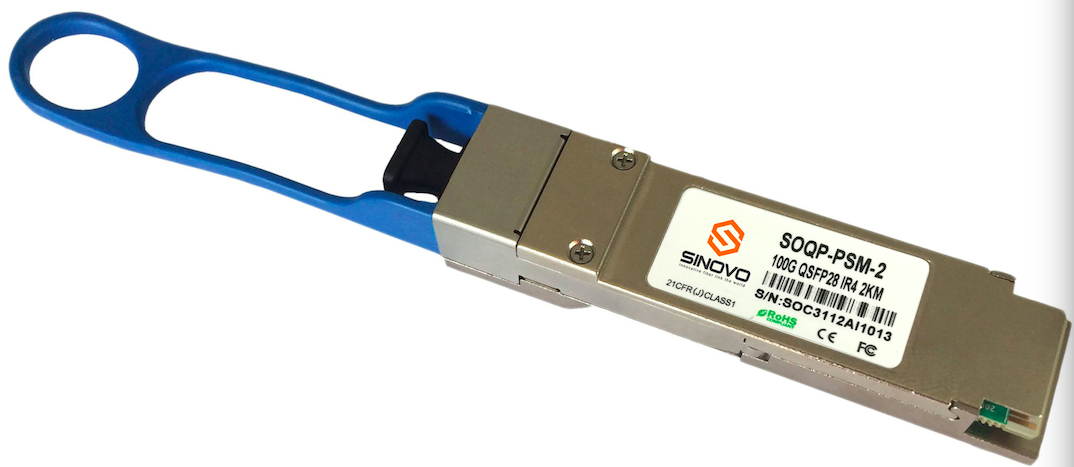With the rapid development of optical communication and Internet in recent years, users demand for the network is also homeopathic surge, which led to the telecommunications backbone of the annual flow is 50% to 80% of the rapid growth. In order to adapt to the development trend of 10G-40G-100G or 10G-25G-100G in the network market, 100G optical module came into being and developed rapidly in the market, which played a vital role in constructing 100G network system.
Since the advent of the 100G network, IEEE, multi-source protocol (MSA) industry alliance and other institutions are for 100G optical module developed a number of standards. as the picture shows:

Depending on the package, the 100G optical module can be divided into CFP / CFP2 / CFP4 optical modules, CXP optical modules and QSFP28 optical modules. The specific parameters are shown in the table below:

The QSFP28 optical module and QSFP optical module design concept is the same, there are four transmit and receive ports, each channel transmission rate up to 28Gbps. With small size, power consumption does not exceed 3.5W, etc., by more attention, is the current 100G optical module mainstream package, such as 100G QSFP28 optical module.

100G optical module in the realization of 100G optical transmission at the same time, there have been a series of major technological changes, including polarization multiplexing phase modulation technology, digital coherent reception technology third generation of ultra-error correction coding technology, thus satisfying the market demand changes , Became the mainstream of the market.
At the same time, high-definition video 4k, live, VR and other new applications to promote the rapid growth of network traffic, as well as cloud computing, IaaS services, large data and other emerging application requirements, data center data transfer within the higher requirements, Optical module market continues to develop.
Although the 100G optical module has become the mainstream market, but the bandwidth, port density, and system energy consumption requirements are still rising, which also further promote the technology to 200G, 400G or higher speed system forward.
With the 200G / 400G standard version of the ongoing revision, 200G / 400G optical module standards have been in progress, there are modules manufacturers have introduced module samples for publicity. In fact, for the next stage of development, the use of 200G or 400G program has always been the object of controversy in the industry, until the commercial phase of the competition will be more intense.
400G optical module types, including CDFP, CFP8, QSFP-DD and OSFP four. CDFP is the first out of the 400G optical module, 2014 has been to version 3.0. CFP8 is a new member of the CFP family following CFP4, larger size. QSFP-DD is the more popular type, in addition to slightly longer length, the other and QSFP28 basically the same, but the upper and lower sides of the cheat has two rows, you can achieve without increasing the width of the module while doubling the number of signals.
OSFP is a new 400G optical module type with eight high-speed electrical channels and still supports 32 OSFP ports per 1U front panel, enabling 12.8 Tbps per 1U. With integrated radiator, can greatly improve the thermal performance, and can be in the traditional airflow switch chassis to achieve up to 15W power module.
Compared with 100G, 400G system can be based on the 100G to further enhance the network capacity, and reduce the cost per bit transmission. Because in the 40G / 100G product direction, the use of four-channel parallel architecture as the most cost-effective high-bandwidth optical packaging platform has been proven for both the future 4x50Gx2 architecture, or 4X100G architecture, the same will have the most cost-effective.


